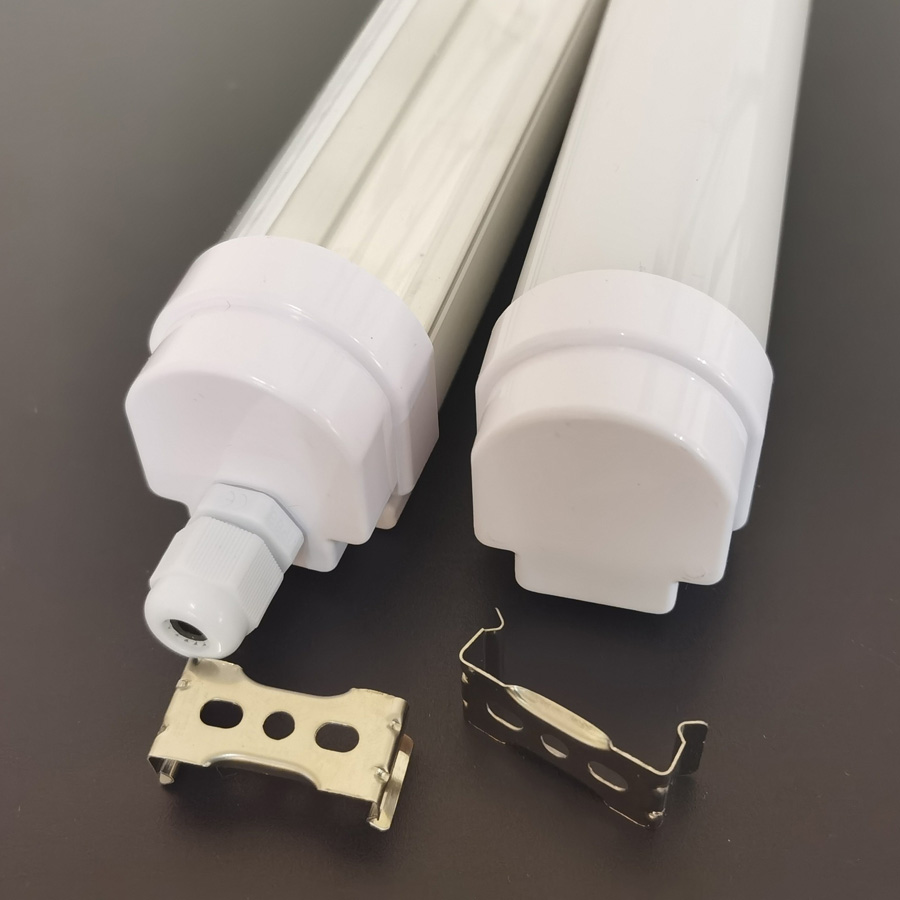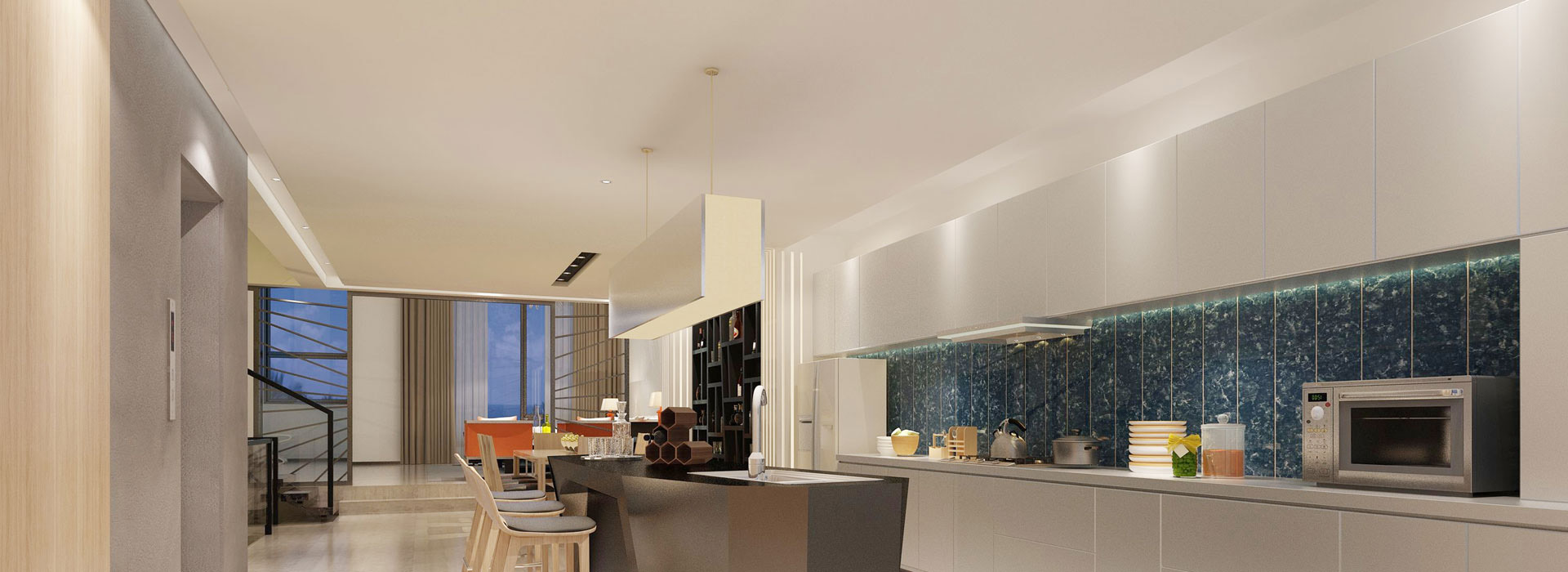- English
- Español
- Português
- русский
- Français
- 日本語
- Deutsch
- tiếng Việt
- Italiano
- Nederlands
- ภาษาไทย
- Polski
- 한국어
- Svenska
- magyar
- Malay
- বাংলা ভাষার
- Dansk
- Suomi
- हिन्दी
- Pilipino
- Türkçe
- Gaeilge
- العربية
- Indonesia
- Norsk
- تمل
- český
- ελληνικά
- український
- Javanese
- فارسی
- தமிழ்
- తెలుగు
- नेपाली
- Burmese
- български
- ລາວ
- Latine
- Қазақша
- Euskal
- Azərbaycan
- Slovenský jazyk
- Македонски
- Lietuvos
- Eesti Keel
- Română
- Slovenski
- मराठी
- Srpski језик
What Features Should I Look for in a Tri-Proof LED Fixture?
2024-10-03

What are the main features of a Tri-proof LED Fixture?
A Tri-proof LED fixture comes packed with several features that make it suitable for extreme environmental conditions. Some of the main features include:1. Waterproof rating: Tri-proof LED fixtures are designed to be waterproof with a rating of IP65 or higher, which makes them suitable for wet environments. 2. Dustproof rating: With a rating of IP66 or higher, Tri-proof LED fixtures are capable of blocking dust or other particles that might affect their lighting performance. 3. Corrosion resistance: The fixture is made of high-quality materials that are resistant to corrosion, ensuring longevity, and durability. 4. Energy Efficiency: Tri-proof LED fixtures are known for their energy efficiency, which translates to lower energy bills and cost savings. 5. Impact resistance: These fixtures can withstand impact and vibrations that might affect their performance, ensuring that they last long.
What are the different types of Tri-proof LED fixtures available?
There are different types of Tri-proof LED fixtures available in the market, including:1. Single-ended design: This type of fixture has one connection port and is suitable for use in low to medium power lighting applications. 2. Double-ended design: This type of fixture has connection ports on both ends, which makes it ideal for high-powered lighting applications. 3. Integrated LED Tri-proof fixture: With this type of fixture, the LED lights are already integrated into the fixture, which makes it easy to install. 4. Non-Integrated LED Tri-proof fixture: This type of fixture has a separate LED light module that is attached to the fixture.
How do I install a Tri-proof LED fixture?
Installing a Tri-proof LED fixture is relatively easy, and it's a process that you can DIY. The fixture comes with a set of installation instructions that you should follow carefully. Some general steps to follow when installing the fixture include:1. Turn off power: Before you start the installation process, make sure you turn off the power supply to avoid accidents. 2. Mount the fixture: The fixture comes with brackets that you can use to mount it on a flat surface. 3. Connect the wires: The fixture comes with wires that you will need to connect to the power supply using wire nuts. 4. Secure the fixture: Once connected, secure the fixture to the bracket using screws to keep it in place. 5. Test the fixture: Turn on the power supply and test to see if the fixture is working correctly.
What are some applications of Tri-proof LED fixtures?
Tri-proof LED fixtures are used in various industrial and commercial applications, including:1. Warehouses and storage facilities 2. Parking garages 3. Basements 4. Refrigeration units 5. Manufacturing plants 6. Outdoor locations 7. Industrial kitchens
Conclusion
In conclusion, Tri-proof LED fixtures are designed to withstand tough environmental conditions while providing high-quality lighting solutions for industrial and commercial applications. They come packed with several features that make them an excellent fit for various uses, from warehouses to outdoor locations. With their increasing popularity, you can get a Tri-proof LED fixture that meets your specific needs at an affordable price. Dongguan Jinen Lighting Technology Co., Ltd. is a leading supplier of high-quality LED tri-proof fixtures. Our fixtures are designed to withstand extreme conditions while providing high-quality lighting solutions. We offer a wide range of Tri-proof LED fixtures that come packed with several features. For more information, please visit our website at https://www.jeledprofile.com or contact us at sales@jeledprofile.com.Scientific journal articles related to Tri-proof LED fixture:
1. Chan, C., & Chen, W. (2019). A study on thermal performance of LED tri-proof luminaries. Energy and Buildings, 187, 188-198. 2. Su, Y., & Chen, J. (2018). A study on the optical behavior of LED elastic tri-proof luminaire. Journal of Physics: Conference Series, 1065(4), 422-428. 3. Wang, H., Chen, W., & Deng, Z. (2019). A review of LED tri-proof luminaires applied to extreme environments. European Journal of Science and Technology, 3(1), 12-22. 4. Lin, H., & Li, W. (2018). Design and analysis of an LED tri-proof luminaire for mining safety. IEEE Access, 6, 40087-40094. 5. Wang, Y., & Liu, H. (2019). A study on the thermal dissipation of LED tri-proof luminaire with different radiator materials. Journal of Thermal Science and Technology, 39(1), 52-60. 6. Song, J., & Feng, Y. (2018). The design and application of an LED tri-proof luminaire based on chip-on-board technology. Optoelectronics Letters, 14(3), 228-232. 7. Zhang, W., & Liu, J. (2020). A study on the color rendering of LED tri-proof luminaires under different operating conditions. Optik, 211, 164488. 8. Zhou, Y., & Li, X. (2019). A study on the heat transfer mechanism of LED tri-proof luminaires using CFD simulation. Heat Transfer-Asian Research, 48(3), 826-839. 9. Lin, J., & Wang, D. (2018). Experimental and simulation study on thermal performance of LED tri-proof luminaires. Journal of Thermal Science and Engineering Applications, 10(5), 1-11. 10. Tong, X., & Zhang, X. (2019). A review of recent developments in LED tri-proof luminaires. International Journal of Electronics and Electrical Engineering, 7(3), 98-107.



